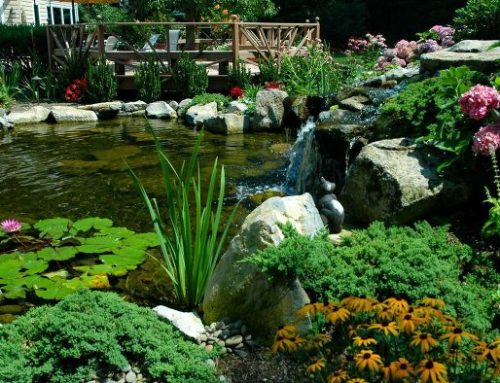To get the lowdown on the best trees to plant for fiery Fall color, Deck and Patio spoke with Angelo Puleo, Nursery Division, Bissett Nursery (Holtsville, NY).
“One of the most popular and widespread deciduous trees that produces bright reds in autumn is the beautiful Maple tree,” says Puleo. “In particular, we recommend Sugar Maples, and, of course, Oaks for great Fall red color.”
Puleo also recommends the Cleveland Select Pear for robust color. Like the Oak and Maple, it is also hardy and can withstand most winds and storms, including ice storms —a real plus in our neck of the woods.
“In Spring, the Cleveland Select bursts awake in beautiful white flowers, and in the Fall, its leaves offer up a deep orange-y-red blaze of color,” he says. Another option is the Crape Myrtle tree, which, as Puleo admits, is not quite as brilliant as the other trees, but it does offer an attractive reddish-orange color. When the Crape Myrtle finishes flowering in the Fall, it also pods-up with berries, and attracts such delightful visitors as the Yellow-rumped Warbler, a sweet little visitor who feeds on these berries after insects are gone.
In addition, when it comes to smaller trees, Deck and Patio designers often consider Japanese Maples in landscaping plans; red-leafed versions of this beautiful tree offer degrees of red from Spring through Fall. Planting them in early Fall allows for new root growth in time for Spring.
Note: Be sure to ask experts at an established nursery or landscaping firm which variety of maple, etc. will produce red leaves in the Fall, as some varieties offer up a blazing yellow instead. Not that there’s anything wrong with that… that’s just for another blog post.
A beautiful shade tree in summer with brilliant color in autumn, the Red Maple can be planted any time of year, including Fall. Dig a hole twice the size of the root ball, place it in the ground, and fertilize and water well, says Angelo Puleo of Bisset Nurseries.
The Crape Myrtle tree that thrives on Long Island is a hybrid of other Crape Myrtles that flourish in warmer climates such as the Southern United States. Clusters of pink blossoms appear in late spring (shown here) which are so delicate and crinkly they look like they are made of crape paper. In Fall, it showcases bright red-orange-y leaves.
Escaping the harsher winters up north, the Yellow-rumped Warbler makes a home in our area as Fall sets in. With insects less available, it loves to feast on Crape Myrtle berries. If you plant this tree, this little fellow — and some of his friends — will no doubt visit and stay awhile.















[…] Trees like the Crepe Myrtle, which offer beautiful pink spring flowers and, in fall, finish flowering when the leaves pod up into pretty berries, also provide interesting bark color in winter. More on Crepe Myrtle: https://deckandpatio.com/for-fiery-fall-foliage-are-you-barking-up-the-right-trees/ […]